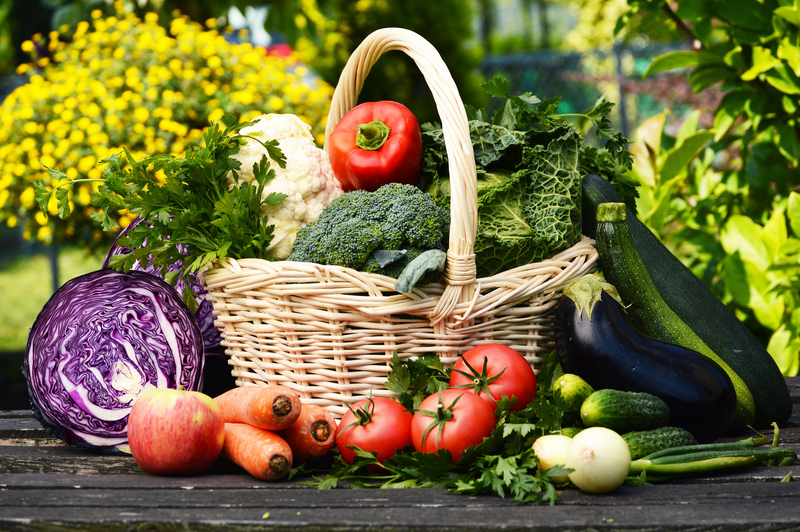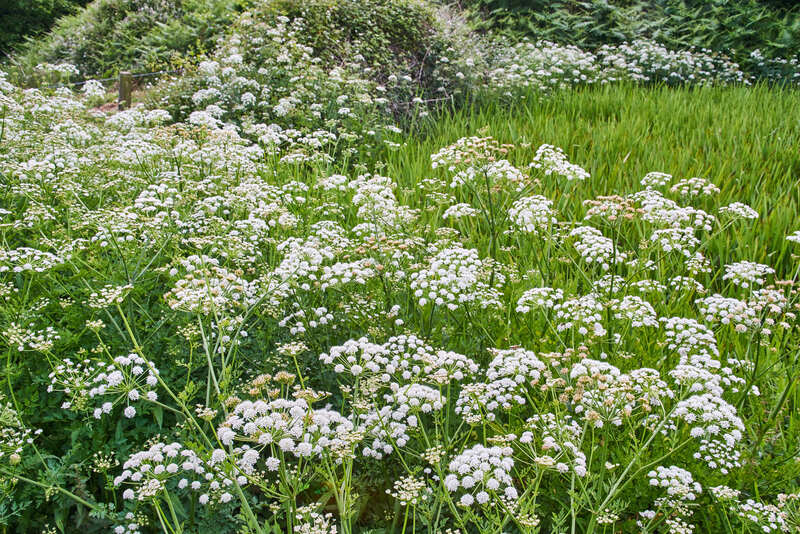9 Gardening Techniques to Kickstart Your Horticultural Journey
Posted on 26/06/2025
9 Gardening Techniques to Kickstart Your Horticultural Journey
Are you ready to transform your green dreams into reality? Gardening is more than just a hobby - it's a relaxing way to connect with nature, boost mental well-being, and grow fresh food or beautiful flowers. Whether you're a beginner with a few pots or a budding enthusiast ready to take on a backyard project, learning effective gardening techniques is the first step towards a stunning and thriving garden space. In this comprehensive guide, we'll dive into nine essential strategies that will launch your horticultural adventure with confidence and success.

Why Mastering Gardening Methods Matters
Before grabbing your trowel, learning about the best horticultural practices will set you up for prosperity. Knowing when and how to nurture your soil, choose plant varieties, and maintain your space means healthier plants and a more rewarding gardening experience. With the right techniques, you'll save time, minimize frustration, and maximize blooms or harvests. Let's dig into these game-changing tips!
1. Assessing and Choosing the Perfect Location
Location is the foundation of your successful gardening journey. Plants vary in their sunlight, shade, and moisture needs. Knowing how to take full advantage of your environment will increase your odds of flourishing growth.
- Observe Sun and Shade Patterns: Spend a day tracking how sunlight moves across your yard or balcony. Most vegetables and blooms require six hours of bright sun daily.
- Check Soil Drainage: Dig a small hole and fill it with water - if it doesn't drain within a few hours, choose a better-draining spot.
- Microclimates Matter: Fences, walls, large trees, and slopes may create warmer, cooler, or windier mini-environments. Recognizing these helps you position plants with care.
Pro Tip: South-facing areas (in the Northern Hemisphere) often receive the most consistent sunlight, making them ideal for most garden beds and containers.
2. Understanding and Nourishing Your Soil
A flourishing garden starts with healthy soil. Soil isn't just dirt - it's a living, breathing foundation for every plant. Learning soil preparation techniques helps ensure the best possible start for your horticultural endeavors.
- Conduct a Soil Test: Many garden centers offer easy-to-use kits. Test for pH, texture (sand, clay, loam), and nutrient content.
- Add Organic Matter: Compost, well-rotted manure, or leaf mold improves drainage, fertility, and plant health. Work in at least 2-3 inches of compost before planting.
- Avoid Excess Tilling: Disturbing soil structure too often damages beneficial organisms; dig only as much as needed to plant and amend.
Pro Tip: Perform a simple "squeeze test" - moisten soil and squeeze it in your palm. Sandy soil falls apart, clay sticks together, and loam crumbles gently.
3. Starting with Raised Beds and Containers
If your soil quality is poor or space is limited, raised bed gardening and container gardens are a practical, beginner-friendly option. These methods give you control over soil conditions and make maintenance easier.
- Build or Buy Raised Beds: Use untreated lumber, bricks, or commercial kits. Depths of 6-12 inches suit most vegetables.
- Choose Quality Potting Mix: For containers, invest in a premium-style potting soil with added compost or slow-release fertilizer.
- Ensure Drainage: Drill holes in containers and avoid overly compacted soils in beds.
Many popular plants, from herbs to tomatoes, perform exceptionally in raised or potted spaces.
4. Selecting the Right Plants for Your Garden
One critical step for horticultural success is matching plants to your environment and lifestyle. All plants have unique needs--pick ones that will truly thrive in your space.
- Consider Your Climate Zone: Look up your USDA Plant Hardiness Zone and select varieties suited for your region's frost dates and seasonal rain.
- Match Sun Needs: Don't mix shade lovers with sun seekers. Read seed packets or plant labels carefully.
- Start with 'Easy' Plants: Lettuce, radishes, marigolds, and zinnias are classic "starter" choices for novice gardeners.
- Think About Maintenance: Annuals provide color all season but need replanting; perennials come back year after year for lower upkeep.
Pro Tip: Look for disease-resistant or compact varieties if starting in a small space or in containers.
5. Mastering the Art of Sowing Seeds and Transplanting Seedlings
Planting techniques make a huge difference. Whether sowing directly outdoors or starting indoors, knowing how to handle seeds and young plants ensures a strong, healthy garden.
- Follow Spacing Guidelines: Crowding reduces airflow and increases the risk of disease. Most seed packets list precise spacing.
- Seasonal Timing is Key: Some seeds do best when started indoors and transplanted after frost (tomatoes, peppers), while others prefer direct sowing (carrots, beans).
- Handle Seedlings Gently: When transplanting, hold by the leaves, not delicate stems, and water well after moving to reduce shock.
Label your rows and keep a gardening journal to track what works best for your growing space!
6. Watering Wisely: The Key to Thriving Plants
Overwatering and underwatering are common mistakes in home gardening. Learning precise watering strategies can mean the difference between lush plantings and disappointing losses.
- Morning is Best: Water early so leaves dry quickly, reducing the risk of fungal disease.
- Soak, Don't Sprinkle: Deep, infrequent watering promotes healthy root growth. Avoid shallow, frequent watering.
- Use Mulch: Applying organic mulch like straw or bark conserves moisture, cools soil, and minimizes weeds.
- Container Caution: Pots dry out faster than beds--check daily, especially in warm weather.
Pro Tip: Stick a finger 1-2 inches into the soil--if it feels dry at that depth, it's time to water!
7. Fertilizing for Flourishing Growth
Plants need nutrient-rich soil for robust growth and abundant harvests. Learning how and when to apply fertilizer is a core gardening technique for beginners and experts alike.
- Opt for Organic Fertilizers: Compost, fish emulsion, and aged manure feed the soil and plant roots naturally.
- Follow Product Instructions: Synthetic fertilizers can burn plants if over-applied. More is not always better.
- Feed Appropriately: Leafy greens benefit from nitrogen, while fruits and flowers need more phosphorus and potassium.
- Watch for Deficiencies: Pale leaves, poor growth, or leaf drop could mean your soil needs a nutrient boost.
Never fertilize dry plants; always water first to prevent root burn!
8. Mulching and Keeping Weeds at Bay
Weeds compete with your precious plants for water, nutrients, and sunlight. Mulching is a powerful gardening tool to control weeds naturally while providing other benefits.
- Apply a 2-3" Layer: Organic materials like shredded bark, compost, leaf mold, or straw keep weeds down and soil moist.
- Avoid Mulching Right Against Stems: Leave a small gap around the base of plants to prevent rot.
- Hand-Remove Persistent Weeds: Especially after rain, pull weeds when soil is moist for the best results.
- Suppress Weed Seeds: A thick mulch layer blocks sunlight, preventing new weed seeds from sprouting.
Pro Tip: Replenish mulch annually for continuous soil health and weed prevention.
9. Pruning, Deadheading, and General Maintenance
Regular care and timely intervention are what separate thriving gardens from mediocre patches. Learning the basics of pruning and maintenance will keep your garden in top shape.
- Remove Spent Flowers (Deadhead): This encourages new blooms in annuals and some perennials.
- Prune for Health and Shape: Trim damaged or crossing branches and encourage strong, attractive growth in shrubs and trees.
- Tidy Regularly: Pull out diseased leaves, check for pests, and keep pathways clear.
- Keep Tools Clean: Regularly clean and sharpen gardening tools to prevent disease spread and make work easier.
Weekly walkabouts help you spot problems early, schedule maintenance, and enjoy your achievements!

Conclusion: Start Your Gardening Adventure with Confidence
Embarking on your horticultural journey doesn't require a green thumb--just curiosity, patience, and a willingness to learn new gardening strategies. By mastering these nine fundamental gardening techniques, you'll lay the groundwork for a vibrant, productive, and beautiful outdoor sanctuary.
Remember, each garden is unique, and mistakes are part of the process. Whether your focus is food, flowers, or relaxation, these tools and skills will help you nurture your outdoor paradise. Happy gardening!
Bonus Tips for Gardening Beginners:
- Start small and expand as your confidence grows.
- Keep a garden journal to record successes and lessons learned.
- Ask local gardeners or join a gardening club for region-specific advice.
- Celebrate every milestone--from your first sprout to your first bouquet or harvest!
Ready to begin your horticultural journey? Follow these gardening methods, experiment, and enjoy each step--soon, you'll be reaping the fruits (and flowers) of your labor!

